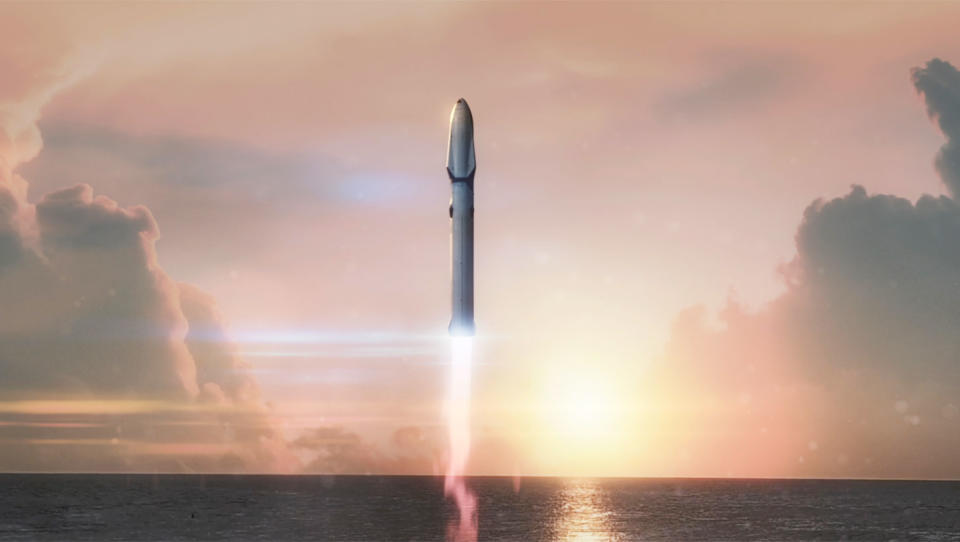Elon Musk hints at changes to SpaceX's Mars rocket
It’s smaller than the one meant to take 100 people to Mars at once.
We've known for a while that SpaceX's plan to get an uncrewed capsule to Mars by the end of next year was a little too ambitious. Last week, we reported that Musk had abandoned plans for the Red Dragon capsule altogether, but he promised something much better was waiting in the wings. Now, thanks to Ars Technica's keen eye, we may know a little more about what form this vehicle will take.
A 9m diameter vehicle fits in our existing factories ...
— Elon Musk (@elonmusk) July 22, 2017
Last year, Elon Musk outlined a bold plan to begin transporting large numbers of humans to the red planet in a concerted effort to begin colonizing Mars. It seems as though this plan was at once too big and too small, though. Rather than focusing efforts on landing a single capsule on the red planet, Musk wants to shoot for a plan that's more in line with his original grand vision of sending larger ships to establish a Martian colony.
But he clearly doesn't want it to be too big; no one can ever accuse Musk of not having a vision, but it also needs to be feasible and achievable if he ever actually wants to get SpaceX to Mars. That's where this tweet comes in. The original SpaceX plan involved a massive rocket with 42 engines, with a 12-meter diameter, that would ferry ships of a 100 people or more to the red planet. Musk is now hinting that the rocket he is planning to use will have a 9-meter diameter. According to Ars Technica, this could leave the rocket with half the engines (21) and, therefore, half the mass.
That's much more feasible on multiple levels: cost, mass (weight is the single most important criteria when considering spaceflight), technical complexity, and issues of production: Finding a place to build a rocket as massive as the one Musk had originally envisioned would be challenging. This 9-meter rocket would be much bigger than the 3.7-m Falcon 9s the company is currently producing, but as Musk points out, it would fit in their current factories. This is all a lot of conjecture, but considering the source is Musk himself, it's feasible that the company is building a smaller version of their original Interplanetary Transport System. And because this rocket could be easier to build (though still will be a challenge), it could bring Musk's Mars ambitions one step closer to reality.



